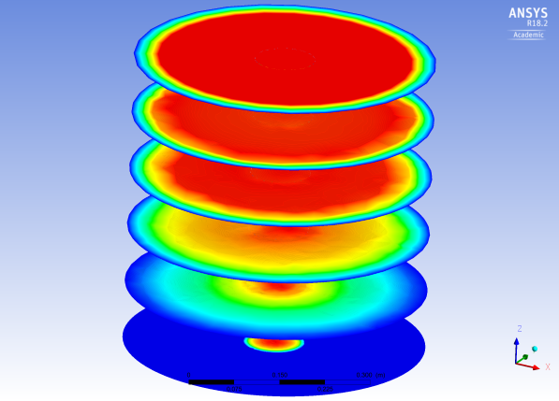VORTICITY
Vorticity has long been a difficult concept to teach to undergraduate students. Mathematically defined as the curl of the velocity vector, vorticity is often explained in physical terms as a fluid particle’s tendency to rotate as it flows. However, certain aspects of vorticity are difficult to explain without visual demonstrations, such as the vorticity of unidirectional flow. The goal of this project is to enhance students’ understanding of vorticity by developing computational fluid dynamics (CFD) models that are both visual and interactive. Allowing students to see vorticity gradients or vector fields superimposed on model geometries provides a better understanding of how vorticity changes throughout a system than a system of equations can. Being able to directly compare these vorticity contours to those of density, pressure, and velocity within the same system sheds light on the direct relationships between these parameters. Streamlines of the fluid particles may also be superimposed over these contours to demonstrate how the vorticity of a particle changes as it moves through the system. Supplementing existing lecture material with these visual models will enhance undergraduate understanding, and thus will be incorporated into future CHE 243 fluid dynamics curriculum.

USER DEFINED FUNCTIONS
Computational Fluid Dynamics (CFD) can shed light on complex flow processes difficult to understand through experimentation alone. Such processes often require customization beyond the standard capabilities of CFD software packages. This project focuses on creating useful and practical User Defined Functions (UDFs) in ANSYS Fluent.
MULTIPHASE BUBBLES
Modeling bubbles is difficult because of the large size distribution that occurs. As a result, most simulations assume a single size bubble, which is obviously an unrealistic condition. This project focus on modeling bubbles of numerous sizes which has a wide range of applications.
